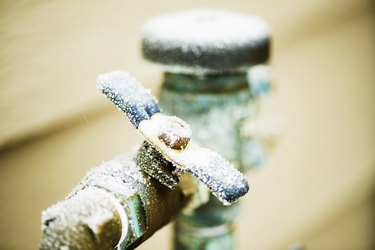Preventing Frozen Pipes in Cold Weather: Essential Advice
Preventing Frozen Pipes in Cold Weather: Essential Advice
Blog Article
Just how do you really feel about How To Avoid Freezing Pipes?

Cold weather can ruin your pipes, specifically by freezing pipelines. Here's just how to prevent it from occurring and what to do if it does.
Introduction
As temperature levels decrease, the risk of icy pipelines increases, potentially causing expensive repair services and water damage. Understanding just how to stop icy pipes is essential for home owners in chilly environments.
Comprehending Frozen Pipes
What triggers pipelines to ice up?
Pipelines ice up when subjected to temperatures below 32 ° F (0 ° C) for prolonged periods. As water inside the pipes freezes, it expands, putting pressure on the pipeline wall surfaces and possibly causing them to break.
Threats and damages
Frozen pipelines can result in water system disruptions, property damages, and pricey repair work. Ruptured pipelines can flooding homes and create comprehensive architectural damages.
Indications of Frozen Piping
Recognizing icy pipes early can prevent them from bursting.
How to identify frozen pipes
Look for decreased water circulation from taps, uncommon odors or noises from pipes, and noticeable frost on revealed pipelines.
Avoidance Tips
Protecting susceptible pipes
Cover pipelines in insulation sleeves or utilize warm tape to safeguard them from freezing temperature levels. Concentrate on pipes in unheated or outside locations of the home.
Home heating techniques
Maintain interior areas properly warmed, specifically locations with plumbing. Open closet doors to allow warm air to distribute around pipelines under sinks.
Shielding Outdoor Pipes
Garden tubes and outside taps
Detach and drain yard hoses before winter months. Install frost-proof spigots or cover outdoor faucets with insulated caps.
What to Do If Your Pipes Freeze
Immediate actions to take
If you suspect frozen pipelines, maintain taps open up to relieve stress as the ice thaws. Make use of a hairdryer or towels taken in hot water to thaw pipes slowly.
Long-Term Solutions
Structural changes
Consider rerouting pipelines far from outside walls or unheated areas. Include added insulation to attic rooms, basements, and crawl spaces.
Upgrading insulation
Buy high-quality insulation for pipelines, attics, and wall surfaces. Appropriate insulation helps keep consistent temperature levels and decreases the threat of frozen pipelines.
Conclusion
Preventing icy pipes needs aggressive steps and fast reactions. By comprehending the causes, indicators, and safety nets, home owners can protect their pipes during winter.
5 Ways to Prevent Frozen Pipes
Drain Outdoor Faucets and Disconnect Hoses
First, close the shut-off valve that controls the flow of water in the pipe to your outdoor faucet. Then, head outside to disconnect and drain your hose and open the outdoor faucet to allow the water to completely drain out of the line. Turn off the faucet when done. Finally, head back to the shut-off valve and drain the remaining water inside the pipe into a bucket or container. Additionally, if you have a home irrigation system, you should consider hiring an expert to clear the system of water each year.
Insulate Pipes
One of the best and most cost-effective methods for preventing frozen water pipes is to wrap your pipes with insulation. This is especially important for areas in your home that aren’t exposed to heat, such as an attic. We suggest using foam sleeves, which can typically be found at your local hardware store.
Keep Heat Running at 65
Your pipes are located inside your walls, and the temperature there is much colder than the rest of the house. To prevent your pipes from freezing, The Insurance Information Institute suggests that you keep your home heated to at least 65 degrees, even when traveling. You may want to invest in smart devices that can keep an eye on the temperature in your home while you’re away.
Leave Water Dripping
Moving water — even a small trickle — can prevent ice from forming inside your pipes. When freezing temps are imminent, start a drip of water from all faucets that serve exposed pipes. Leaving a few faucets running will also help relieve pressure inside the pipes and help prevent a rupture if the water inside freezes.
Open Cupboard Doors
Warm your kitchen and bathroom pipes by opening cupboards and vanities. You should also leave your interior doors ajar to help warm air circulate evenly throughout your home.

I hope you enjoyed reading our topic about How to Prevent Your Pipes From Freezing. Thank you so much for spending some time to browse our piece of content. Sharing is good. Who knows, you may be helping someone out. Bless you for being here. Don't hesitate to check up our site back soon.
Prices & Booking Report this page